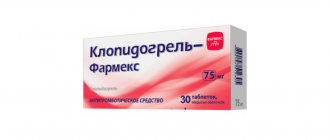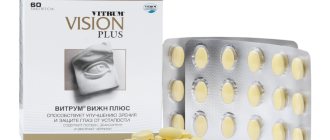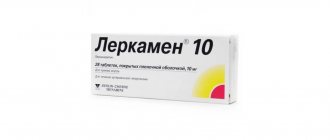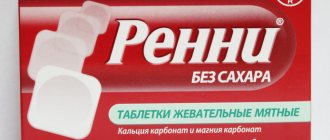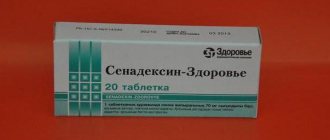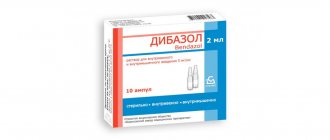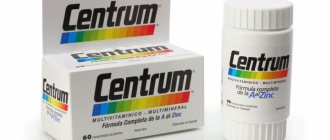An antacid medicine instantly eliminates heartburn and soothes stomach pain caused by excess hydrochloric acid. Even absolutely healthy people should buy Rennie and keep it in their home medicine cabinets. And for gastritis with high acidity and other disorders of the gastrointestinal tract, it should always be at hand.
Rennie's composition
One Rennie tablet contains: 680 mg calcium carbonate , 80 mg magnesium hydroxycarbonate .
Additional Ingredients: Pregelatinized corn starch, sucrose, potato starch, magnesium stearate, talc, liquid light paraffin, menthol flavor (gum arabic, maltodextrin, peppermint oil, silica), lemon flavor (maltodextrin, lemon oil, water) or peppermint flavor, or orange flavor.
Contraindications and side effects
It is prohibited to take an antacid if there are calcium metabolism disorders, severe renal failure, or if you are sensitive to any of the components. The list of contraindications also includes intestinal malabsorption syndrome and fructose intolerance. In addition, Rennie is not recommended for use by children under 12 years of age.
Symptoms of drug intolerance may include:
- Quincke's edema;
- skin redness, itching or rash.
There are no systemic reactions from the body after taking antacid tablets if the instructions are followed. Long-term use of Rennie increases the risk of kidney stones. An overdose is fraught with the development of nausea, physical weakness, tachycardia, constipation, hypercalcemia and an increase in the level of magnesium ions in the body.
Pharmacodynamics and pharmacokinetics
Pharmacodynamics
Belongs to the group of antacid drugs. Includes magnesium carbonate and calcium carbonate , which provide rapid and long-term neutralization of excess hydrochloric acid in gastric juice. Has a protective effect on the gastric mucosa.
Achieving a therapeutic effect within three to five minutes is due to the rapid solubility of chewable tablets and the high calcium .
Pharmacokinetics
After interaction of the drug Rennie with gastric juice, magnesium and calcium . The degree of absorption of these salts depends on the dose of the drug used. The maximum degree of absorption is up to 20% magnesium and up to 10% calcium .
Small amounts of absorbed calcium and magnesium are excreted by the kidneys. In the intestines, insoluble substances are formed from soluble derivatives of the drug, which are excreted in feces.
Rennie
Rennie ®
(lat. Rennie ®) is an antacid drug used in the treatment of acid-related diseases of the upper digestive tract.
Active ingredients:
calcium carbonate + magnesium carbonate.
Composition of the drug Rennie
Three versions of the medicine are officially registered in the Russian Federation: sugar-free mint chewable tablets, menthol-flavored chewable tablets, and orange-flavored chewable tablets.
Each Rennie tablet contains calcium carbonate 680 mg and basic magnesium carbonate 80 mg.
Excipients:
sucrose - 475 mg, pregelatinized corn starch, potato starch, talc, magnesium stearate, light liquid paraffin, menthol flavor, lemon flavor.
Excipients
for “sugar-free” tablets: sorbitol, pregelatinized corn starch, potato starch, talc, magnesium stearate, light liquid paraffin, mint flavor, sodium saccharinate.
Pharmacological action of the drug Rennie
Rennie contains antacid substances - calcium carbonate and magnesium carbonate, which provide rapid and long-lasting neutralization of excess hydrochloric acid in gastric juice, thereby having a protective effect on the gastric mucosa.
Achieving a positive effect within 3–5 minutes is due to the good solubility of the tablets and the high calcium content. As a result of the interaction of rennie with gastric juice, soluble calcium and magnesium salts are formed in the stomach. The level of absorption of calcium and magnesium from these compounds depends on the dose of the drug. The maximum absorption level is 10% calcium and 15-20% magnesium. A small amount of absorbed calcium and magnesium is excreted through the kidneys. If renal function is impaired, plasma calcium and magnesium concentrations may increase. In the intestines, insoluble compounds are formed from soluble salts, which are excreted in the feces. The positive effects of Rennie are not limited to the acid-neutralizing activity of its components. Calcium and magnesium cations are able to bind bile acids in the lumen of the stomach. At the same time, at low pH values, the binding of calcium ions to bile acids increases, while at pH = 6, conjugation processes are minimal. Calcium ions interact with bile acids to a greater extent than magnesium ions. It is important that calcium and magnesium are more tropic towards lipophilic bile acids, in particular deoxycholic and taurocholic acids, which are characterized by the greatest cytotoxicity (Simanenkov V.I. et al.).
An important feature of the drug Rennie is the speed of onset of the antacid effect, due to the rapid increase in intragastric pH. This is supported by the results of a double-blind, placebo-controlled study comparing the time to gastric pH >3.0 with Rennie, ranitidine, famotidine and placebo. The analysis showed that the target gastric pH value was reached after 5.8, 64.9, 70.1 and 240.0 minutes, respectively.
When prescribing antacids containing calcium carbonate, doctors are often afraid of the development of “acid rebound” (increased production of hydrochloric acid after stopping the drug). A number of studies evaluating acid rebound after a single dose of 1 or 2 Rennie tablets have demonstrated that the average gastric pH within 60–90 (and 90–120, 120–150, and 150–180) minutes after administration of the drug , has no statistically significant differences compared to pH values after taking placebo. The absence of “acid rebound” is explained by the magnesium included in Rennie, which can act as an antagonist of calcium-induced gastric hypersecretion (A.S. Trukhmanov, Yu.V. Evsyutina).
Indications for use Rennie
Symptoms associated with increased acidity of gastric juice and reflux zophagitis: heartburn, belching, periodic pain in the stomach;
feeling of fullness or heaviness in the epigastric region; flatulence, dyspepsia (including those caused by errors in diet, taking medications, abuse of alcohol, coffee, nicotine); dyspepsia in pregnant women. Rennie is recommended for use in the “on demand” mode. Calcium carbonate, which is part of the drug, has a rapid and long-lasting acid-neutralizing effect, enhanced by magnesium carbonate. In the stomach, calcium carbonate and magnesium carbonate react with hydrochloric acid in gastric juice, forming water, soluble mineral salts and carbon dioxide:
CaCO3+2HCl→CaCl2 +H2O + CO2,
MgCO3+2HCl→MgCl2 +H2O+CO2.
A statistically significant increase in the stomach is observed from the first minutes of taking the drug, and on average after 2.5–5.8 minutes the pH in the stomach exceeds 3 (Simanenkov V.I. et al.).
Contraindications
- severe renal failure
- hypercalcemia
- hypersensitivity to Rennie's components
Directions for use: Rennie and dosage
Adults and children over 12 years of age: unless otherwise recommended by a doctor, when symptoms appear, chew 1-2 Rennie tablets or keep in the mouth until completely dissolved.
If necessary, you can repeat Rennie's dose after 2 hours. The maximum daily dose is 11 Rennie tablets. Special instructions:
Patients with impaired renal function are not recommended to take the drug for a long time in high doses. When prescribing Rennie to patients with impaired renal function, the concentration of magnesium and calcium in the blood serum should be regularly monitored. Taking high doses of Rennie may increase the risk of kidney stones.
Long-term use of high doses in combination with milk or dairy products can cause the development of milk-alkali syndrome.
Instructions for patients with diabetes:
1 Rennie tablet contains 475 mg of sucrose. 1 sugar-free Rennie tablet contains 400 mg of sorbitol and saccharin and can be used by patients with diabetes. If the use of the drug is ineffective, you should consult a doctor for advice.
Interaction of Rennie with other drugs:
Medicines should be taken 1-2 hours before or after taking Rennie.
With simultaneous use, Rennie reduces the absorption of tetracycline antibiotics, fluoroquinolones, and phosphates. Rennie does not affect the ability to drive a car or operate other mechanisms.
Use of Rennie during pregnancy and breastfeeding. When used in recommended doses, Rennie does not pose a danger to the fetus or child.
Clinical and pharmacological group:
antacid drug. According to ATC, Rennie belongs to the group “A02 Drugs for the treatment of diseases associated with acidity disorders” and has the code A02AX.
Rennie is an over-the-counter product.
Manufacturer:
Bayer Sante Familiale, France.
Resources for healthcare professionals regarding the use of Rennie
Articles and official instructions
- Minushkin O.N., Maslovsky L.V., Balykina V.V., Zarubina E.N. Clinical use of the drug Rennie. Kremlin medicine. Clinical Bulletin. - 1998. - No. 2.
- Tyutyunnik V.L., Elokhina T.B. Prevention and treatment of gastroesophageal reflux disease in pregnant women // RMZh. – 2009. – T. 16. – No. 16.
- Simanenkov V.I., Tikhonov S.V., Lishchuk N.B. Antacids: are they in demand in the era of proton pump inhibitors? // RMJ. 2017. No. 3. pp. 157-161.
- Nikushkina I.N., Lezhneva Yu.L., Shah Yu.S. Fast-acting antacid drugs and the scope of their use in modern therapy of acid-related diseases // Medical Council. 2014. No. 17. pp. 38–41.
- Trukhmanov A.S., Evsyutina Yu.V. Heartburn in gastroesophageal reflux disease – mechanism of development and approaches to therapy // Breast Cancer. 2017. No. 10. pp. 707–710.
- Instructions for medical use of the drug Rennie (chewable tablets without sugar [mint]). Addition No. 1 of September 14, 2012 to the Instructions for medical use of the drug Rennie (chewable tablets without sugar [mint], chewable tablets without sugar [cooling taste]).
On the website GastroScan.ru in the “Literature” section there is a subsection “Antacids”, containing articles devoted to the treatment of diseases of the gastrointestinal tract with antacids.
Video
Still from video Vovk E.I.
Medicines for the treatment of heartburn and diseases associated with hyperacidity. Clinical pharmacology On the website GastroScan.ru in the “Video” section there is a subsection for patients “Popular Gastroenterology” and subsections “For doctors” and “For medical students and residents”, containing video recordings of reports, lectures, webinars in various areas of gastroenterology for healthcare professionals and medical students.
Rennie has contraindications, side effects and application features. Consultation with a specialist is necessary. Back to section
Interaction
A decrease in the acidity of gastric juice due to the use of antacids leads to a decrease in the degree and rate of absorption of other drugs used simultaneously. Therefore, pharmaceutical drugs must be taken one and a half hours before or after taking Rennie.
When used together, antacids reduce the absorption of fluoroquinolones , tetracycline- type antibiotics, levothyroxine , cardiac glycosides, phosphates , iron preparations , and fluorides.
When used simultaneously with thiazide diuretics, it is recommended to regularly monitor the level of calcium in the blood.
Indications
The medication is suitable as an emergency aid for digestive disorders caused by the consumption of excessively sour, spicy foods, coffee, carbonated drinks, overeating and various diet errors. It is recommended:
- for sudden attacks of heartburn caused by any reason: large amounts of food, alcohol, incorrect combination of dishes, taking medications, uncomfortable body position, high physical activity, smoking immediately after eating;
- with habitual reflux esophagitis in patients with gastritis with high acidity;
- with the consequences of eating unfamiliar foods: dyspepsia, heaviness in the stomach;
- in case of disturbances in the production of digestive enzymes of the pancreas;
- for heartburn in pregnant women.
Rennie is allowed to be used from 12 years of age. If necessary, pediatricians prescribe the drug to younger children in a reduced dosage.
Rennie's analogs
Level 4 ATC code matches:
Gastracid
Relzer
Maalox
Gaviscon Forte
Gastal
The most famous analogues of Rennie: Almagel, Alumag, Gastal, Maalox, Sekrepat Forte.
Rennie price, where to buy
Patients who have never used this remedy are interested in how much Rennie costs for heartburn in comparison with other antacid drugs. Market analysis shows that Rennie's price is an order of magnitude higher than the prices of its peers. Thus, the price of Rennie No. 12 tablets in Russia is 107-130 rubles. In Ukraine, the cost of Rennie No. 12, approved for use during pregnancy, can reach 40 hryvnia.
- Online pharmacies in RussiaRussia
- Online pharmacies in UkraineUkraine
- Online pharmacies in KazakhstanKazakhstan
ZdravCity
- Rennie chewable tablets.
sugar-free mint 48 pcs. Bayer Sante Familiale/Delpharm Gaillard 552 rub. order - Rennie chewable tablets. sugar-free mint 24 pcs. Bayer Sante Familiale/Delpharm Gaillard
RUB 336 order
- Rennie chewable tablets. orange 48 pcs Delpharm Gaillard
RUR 549 order
- Rennie chewable tablets. orange 24 pcs. Bayer Sante Familiale/Delpharm Gaillard
RUB 335 order
- Rennie chewable tablets. menthol 12 pcs. Bayer Sante Familiale/Delpharm Gaillard
RUB 223 order
Pharmacy Dialogue
- Rennie tablets No. 24 (orange) Bayer
RUB 338 order
- Rennie chewable tablets No. 48 (orange) Delpharm Gaillard
500 rub. order
- Rennie tablets No. 12 (mint without sugar) Bayer
RUB 202 order
- Rennie tablets No. 12 (orange) Bayer
RUB 204 order
- Rennie chewable tablets No. 48 (mint without sugar) Bayer
RUR 519 order
show more
Pharmacy24
- Rennie mint N12 tablets Delpharm Gaillard, France
42 UAH. order - Rennie N12 orange tablets Delpharm Gaillard, France
46 UAH order
- Rennie menthol N12 tablets Delpharm Gaillard, France
42 UAH order
- Rennie N24 without sugar, mint tablets Delpharm Gaillard, France
82 UAH order
- Rennie N24 tablets Delpharm Gaillard, France
83 UAH order
PaniPharmacy
- Rennie tablets Rennie chewable tablets with menthol flavor No. 24 France, Delpharm Gaillard
93 UAH order
- Rennie sugar-free tablets Rennie sugar-free chewable mint tablets No. 24 France, Delpharm Gaillard
94 UAH order
- Rennie tablets Rennie chewable tablets with orange flavor No. 12 France, Delpharm Gaillard
53 UAH order
- Rennie tablets Rennie chewable tablets with orange flavor No. 24 France, Delpharm Gaillard
95 UAH order
- Rennie sugar-free tablets Rennie sugar-free chewable mint tablets No. 12 France, Delpharm Gaillard
52 UAH order
show more
How to take Rennie: instructions
Lozenges can be sucked or chewed until completely dissolved. This should be done 1.5–2 hours after eating so as not to slow down the digestive processes. The exception is cases of very severe heartburn. It is not recommended to drink water and drinks at the time of use. A single dose of the drug is 1 or 2 tablets. Rennie can be taken again after 1.5–2 hours. The safe number of lozenges per day is up to 11 pieces.
The drug can be taken occasionally: if dyspepsia or heartburn occurs once. It does not have a therapeutic effect on the general disease, but only eliminates the unpleasant symptoms of digestive disorders. It is not suitable for long-term use.
Rennie can be combined with other medications and vitamin-mineral complexes. But given the ability of the drug to reduce acidity, it is important to take other medications 30–60 minutes before antacid tablets. Otherwise, most of the active substances will not have time to be absorbed.
The drug does not affect mental performance and the speed of motor reactions; it can be taken in almost any situation, regardless of the time of day.
